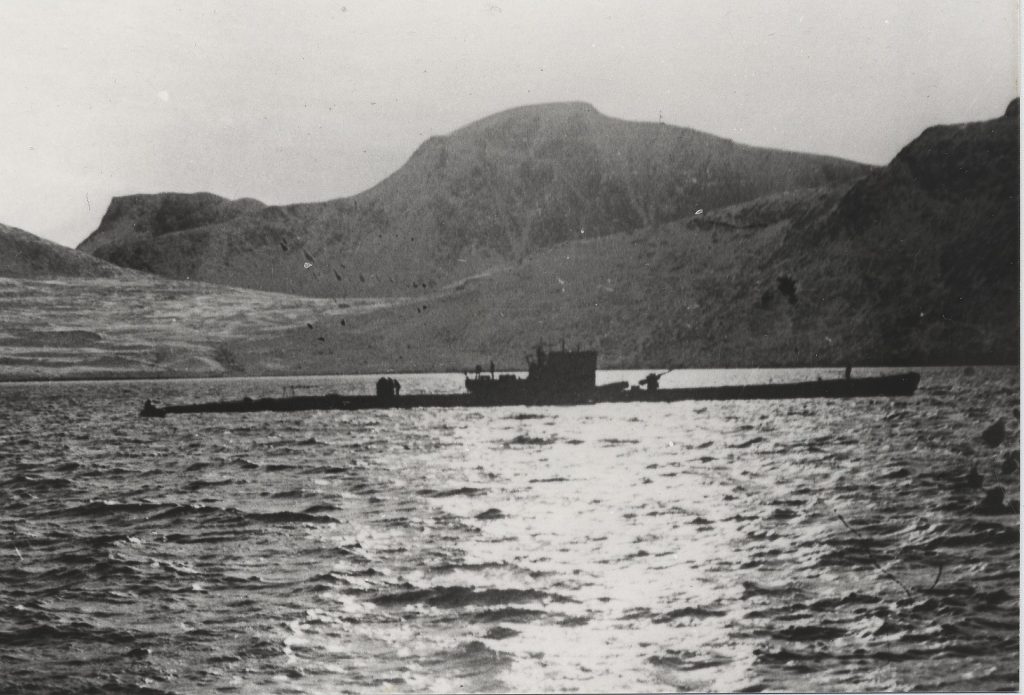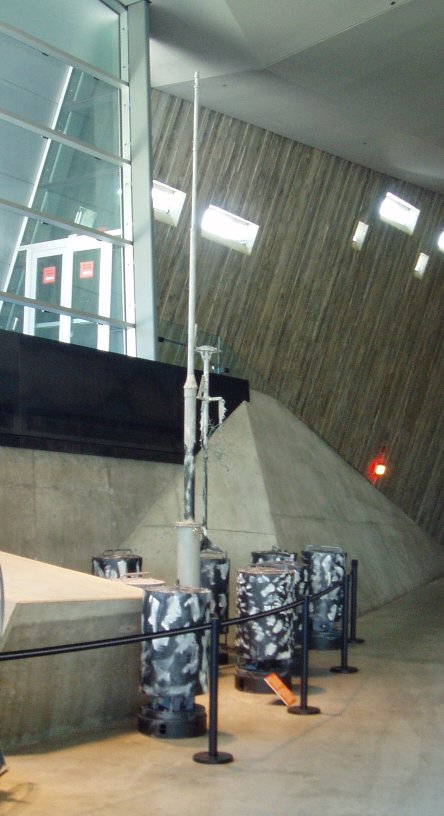Weather Station Kurt was an automated weather outpost secretly established by Nazi Germany on the Labrador coast in Newfoundland in 1943, designed to provide critical meteorological data for military operations in the North Atlantic.
Despite its brief operational life, Kurt showcased advanced technology with its autonomous functioning and sophisticated instruments for measuring temperature, wind, and atmospheric pressure.
Its discovery in 1977 by historian Selma Barkham shed light on the covert presence of German operations in North America during World War II and underscored the strategic importance of meteorological data in wartime.
Inception Of The Weather Station
The inception of the German Weather Station Kurt was rooted in the critical need for accurate weather forecasting during World War II.
Weather information had long been recognized as a vital component in the planning and execution of military campaigns.
However, the Second World War underscored this need with an unprecedented urgency, particularly for the German forces.
As they extended their operations across the globe, the Nazis faced the challenge of acquiring timely and precise meteorological data over vast and often hostile areas.
The Atlantic and Arctic theaters, where naval and air battles were frequent and crucial to the war’s outcome, were areas where such information was sorely lacking.
Understanding the significance of weather in these theaters is essential. Weather affects visibility, sea state, and flight conditions.
For the Kriegsmarine, particularly the U-boat fleets, knowing the weather was the difference between a successful patrol and a wasted one, or worse, a lost submarine.
The Luftwaffe, Germany’s air force, also required accurate weather data to plan bombing raids and reconnaissance flights.
The infamous variability of the North Atlantic weather compounded this need, making reliable forecasts an indispensable part of strategic operations.
To address this, the German military embarked on a covert program to establish automated weather stations across the North Atlantic.
This ambitious plan was designed to fill the gap in the Axis powers’ meteorological network.
The Germans were acutely aware that the Allies, particularly the British with their extensive experience in maritime meteorology, could potentially leverage their better weather forecasting capabilities to gain an upper hand in the war.
Weather Station Kurt was a product of this initiative. Its deployment was intended to provide real-time, accurate meteorological data to the German military, enabling them to make informed decisions about the movement and deployment of their naval and air forces.
The data was particularly crucial for the operation of the U-boats in the Battle of the Atlantic, where they sought to disrupt the vital supply lines between North America and Britain.
Accurate weather forecasts could improve the effectiveness of the U-boats by suggesting the best areas and times for attacking convoys, or conversely, when to lay low to avoid Allied anti-submarine efforts.
Deployment Of ‘Kurt’
The deployment of the German Weather Station Kurt was a clandestine operation of considerable complexity, demonstrating a blend of ingenuity and audacity. U-537, a Type IXC U-boat of the Kriegsmarine, had the unique distinction of being chosen for this task.
The submarine departed from its base in Norway carrying not only its crew but also a specialized team equipped to install the weather station.
Their destination was a desolate, uninhabited stretch of the Labrador coast in Newfoundland, far from prying eyes, yet strategically positioned to fill a critical gap in the meteorological data network.
Upon reaching the coast of Labrador in October 1943, the crew, led by Kapitänleutnant Peter Schrewe, faced the daunting task of setting up the station under harsh weather conditions and with the constant threat of Allied detection.
Their operation was not only a race against time but also against the elements.
The installation had to be swift to minimize the risk of being discovered by the Allies, whose naval and air patrols were a continual danger.
The technical specifications of Weather Station Kurt were remarkable for the time.
The station was essentially a sophisticated piece of automated technology, a precursor to the modern automated weather stations used today.
 U-537 docked in Newfoundland while the crew offload components for the weather station.
U-537 docked in Newfoundland while the crew offload components for the weather station.
It consisted of several instruments, including thermometers to measure air and sea surface temperature, a barometer for atmospheric pressure, hygrometers for humidity, and anemometers to gauge wind speed and direction.
These instruments were robust, designed to withstand the harsh Arctic climate where extreme temperatures and weather events were commonplace.
The data collected by these instruments were transmitted via a 150-watt Lorenz shortwave transmitter, an impressive piece of technology that could reliably send signals across the Atlantic.
The transmitter was powered by a set of batteries, which were expected to provide sufficient power for about six months of autonomous operation.
The station itself was designed to be self-operating—once installed and activated, it required no further human intervention.
It was scheduled to broadcast weather data every three hours, coded for German meteorologists to intercept and decode.
To prevent the station from being identified by the Allies, it was camouflaged.
The Germans went to great lengths to disguise the installation, including labeling equipment with the Canadian company name “Canadian Weather Service” to give an appearance of legitimacy in case of accidental discovery.
This subterfuge was a clear indication of the stealth required for the mission’s success.
The design of Weather Station Kurt also included contingencies for technical malfunctions. It had multiple redundancies to ensure that if one component failed, others would continue to function.
The German engineers who conceived and built the station were well aware of the risks posed by the environment and had engineered the system to be as fail-safe as current technology would allow.
Operational Life Of The Weather Station
After the perilous installation of the German Weather Station Kurt on the Labrador coast, the device commenced its operational life—an existence defined by silent and solitary service in a remote region of the North Atlantic.
Despite the inhospitable environment, the station began its work immediately, dutifully gathering and broadcasting critical meteorological data back to the German military.
The strategic significance of Kurt’s operational role cannot be overstated. Each set of data transmitted played its part in the intricate tapestry of wartime decisions. For the U-boat arm of the Kriegsmarine, this information was particularly vital.
Submarine captains relied on weather reports to make tactical decisions about when to surface for recharging batteries or for maintaining breathable air quality, as well as for setting ambushes in conditions that might hide them from enemy detection.
The automatic nature of the station was a marvel of the period’s technology. Designed to function without human intervention for an extended period, Weather Station Kurt was a forerunner of the autonomous scientific instruments of today.
Its self-contained system, including power supplies and transmission equipment, was engineered to withstand the relentless battering of the elements, from freezing temperatures to snow and ice, which could damage or obscure the sensors.
 Weather station Kurt after being constructed.
Weather station Kurt after being constructed.
Nevertheless, the station’s life was finite and marred by challenges. One of the most significant was the very element it was there to measure—the weather.
The severe conditions of the Labrador coast took their toll on the station’s hardware.
Though robustly built, the technological sophistication of Kurt could not entirely overcome the practical difficulties posed by such an environment.
Battery power, which was the lifeblood of its transmissions, eventually dwindled. While the design included measures for power conservation and the efficient use of energy, it could not perpetually fight against the energy demands required for regular transmission.
Technical malfunctions also posed threats to Kurt’s operational continuity. The station was equipped with the most advanced technology of the time, but like all technology, it was not immune to breakdowns.
As the war progressed, maintenance or repair of such an isolated outpost became logistically impossible.
With the tide of war turning against Germany, the Kriegsmarine had more pressing concerns closer to home and could not risk further voyages to such a remote and vulnerable position solely for maintenance purposes.
By 1944, the station had stopped transmitting. Whether this was due to battery depletion, equipment failure, or other unknown factors remains a matter of historical speculation. The cessation of its broadcasts marked the end of its functional life.
Did the Germans Guard the Weather Station in The Arctic?
The Germans laid out a minefield to protect their Schatzgräber weather station in the Arctic. However, when the Soviets tried to destroy the weather station, they found evidence of military presence.
Specifically, the Soviets found defensive structures, cartridges, and items with German military insignia.
Discovery Of The Weather Station
The Weather Station Kurt remained lost to time and memory until its unexpected discovery in 1977, not by a military operation or a government expedition, but by a historian named Selma Barkham.
Barkham was conducting research on the historical land use of the Labrador coast when she stumbled upon the weather station.
The site, which had sat undisturbed for over three decades, was a veritable time capsule from World War II.
The discovery of Kurt was met with a mix of surprise and fascination.
For many, it was the first tangible evidence of German military presence in North America, a sobering reminder that the war had reached far closer to home than previously believed.
It provided historians with a rare artifact of the war’s secret battles—those fought with intelligence, information, and environmental data.
 The weather station is now on display at the Canadian War Musuem.
The weather station is now on display at the Canadian War Musuem.
Upon its discovery, the significance of the station was immediately recognized.
Artifacts from the site were carefully recovered and are now preserved, providing historians and the public with an invaluable glimpse into the clandestine operations of the war.
The weather station has been analyzed not only as a military relic but also as an early example of automated technology used in environmental science.
The legacy of Weather Station Kurt is multifaceted. On a historical level, it serves as a silent witness to the vast geographical reach and the technical ambition of the German military during the Second World War.
It showcases the extent to which nations were willing to extend their military apparatus into the farthest and most remote areas of the globe.
From a technological standpoint, Kurt was a precursor to the network of automated weather stations now dotted across the globe, crucial for meteorological data collection.
These modern stations owe a part of their heritage to wartime innovations like Kurt, which pushed the boundaries of what was possible in remote data collection.





